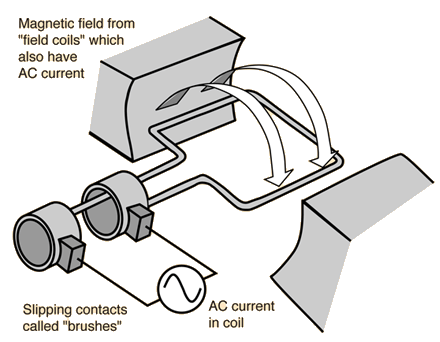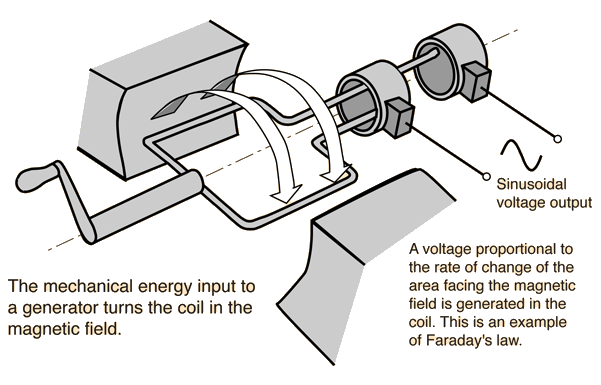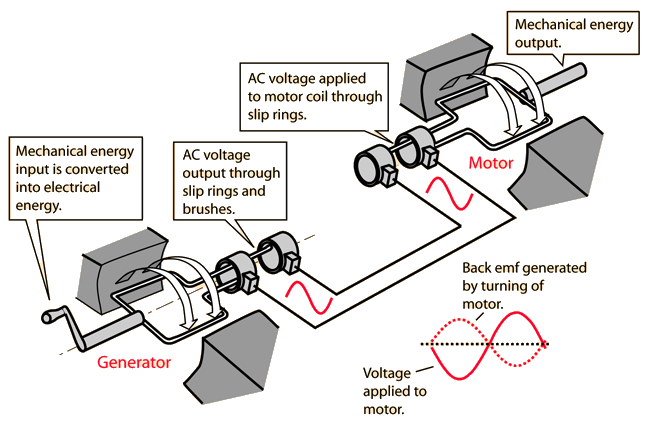AC Motor
 |
As in the DC motor case, a current is passed through the coil, generating a torque on the coil. Since the current is alternating, the motor will run smoothly only at the frequency of the sine wave. It is called a synchronous motor. More common is the induction motor, where electric current is induced in the rotating coils rather than supplied to them directly. |
One of the drawbacks of this kind of AC motor is the high current which must flow through the rotating contacts. Sparking and heating at those contacts can waste energy and shorten the lifetime of the motor. In common AC motors the magnetic field is produced by an electromagnet powered by the same AC voltage as the motor coil. The coils which produce the magnetic field are sometimes referred to as the "stator", while the coils and the solid core which rotates is called the "armature". In an AC motor the magnetic field is sinusoidally varying, just as the current in the coil varies.
| How does a motor work? | AC Generator | Generator and Motor | DC Motor |
DC Circuits
| HyperPhysics***** Electricity and Magnetism | R Nave |

